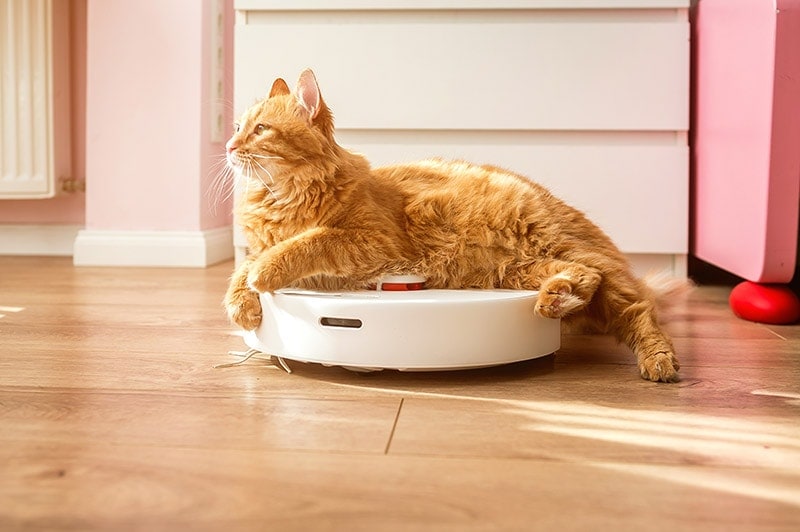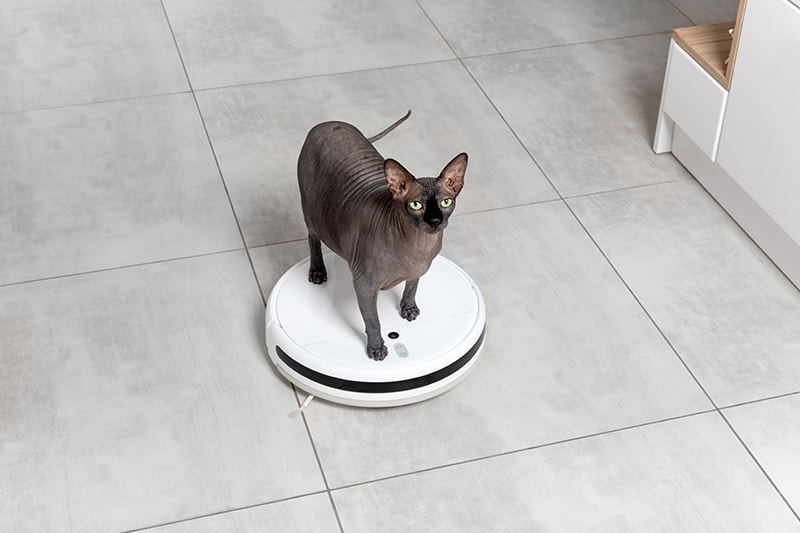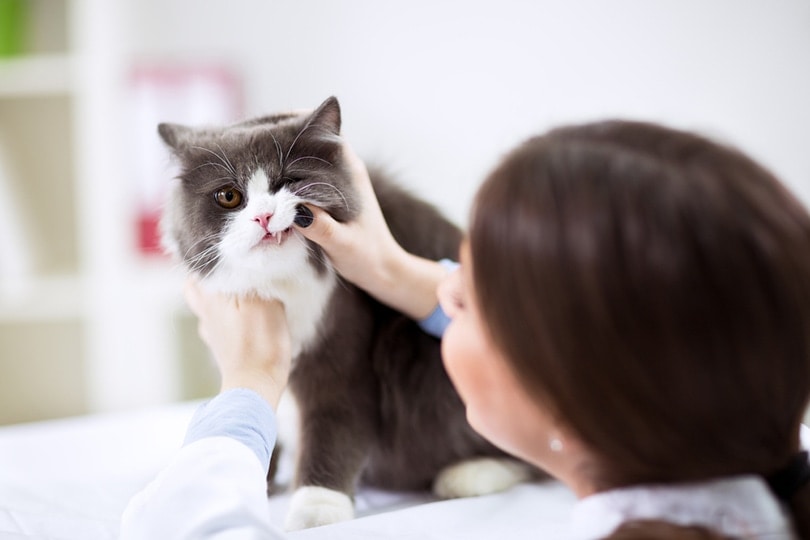Why Do Cats Ride Roombas? Feline Behavior Explained

Updated on

Cats riding Roombas? Yes, you read that right. While it might sound like a quirky internet meme, cats on Roombas are more common than you might think. But why is that, exactly?
As it turns out, this fascinating feline behavior isn’t confined to just one reason, though it may be related to the vibrations, your cat’s hunting instincts, and the machine’s warmth. The fact of the matter is that there are several reasons why you might find your cat on a Roomba.
A Whole New Playground: Cats on Roombas
Cats are notorious for their curiosity, and a Roomba presents a whole new world to explore. The movement, the noise, the ability to hop on and take a ride—it’s all quite intriguing to our feline friends. And it’s the most likely reason why cats like to take rides on Roombas.
However, it’s not the only possible reason. We’ll look at some more in a moment, but first, it’s important to talk about safety. If your cat likes to ride Roombas for fun, monitoring their initial interactions is essential. Check for any sharp or hazardous parts, and make sure the Roomba’s path is clear of obstacles.
The 3 Main Reasons Cats Ride Roombas
1. Good Vibrations
Not all noises make cats run for cover. The gentle hum and vibrations of a Roomba can actually be surprisingly soothing to felines. To some cats, this might feel like an automated purring machine.
If you want to make sure your cat enjoys the Roomba rides, keep an eye on their behavior and keep the Roomba well-maintained. Nobody likes a bumpy ride, not even your cat. A Roomba that’s not been maintained can lead to a rough ride for old Mittens.

2. Good Cat Hunting
Ever watched your cat sit on a windowsill, eyeing the world outside? Put them on a Roomba, and it’s like giving them a mobile hunting perch. They can watch, stalk, and pounce, all from the comfort of a moving platform.
But remember, supervise their playtime and remove any small objects they might be tempted to swallow. It’s all fun and games until someone needs a trip to the vet.
3. A Warming Experience
Another reason that’s highly probable is that your cat might just find the warm Roomba the perfect place for a catnap. As they operate, Roombas warm up. Thus, the warmth, the gentle vibrations—it’s a snuggle haven for our feline friends.
If your cat takes a liking to napping on the Roomba, make sure it’s clean and not too hot. Even cats appreciate a five-star sleeping experience, and that applies to automated vacuums.
Tips to Help Your Cat Overcome Roombaphobia
Not every cat dreams of cruising around on a Roomba. Some cats, quite understandably, might find the robot vacuum’s movement and noise downright frightening. But fear not, pet parents, for there are ways to help your feline friend conquer this so-called “Roombaphobia”.
Technically, the fear of vacuums is called “zuigerphobia”, and it’s certainly understandable if your cat suffers from it. So, what can you do to curb this fear and help your kitty become comfortable around your Roomba?

Domination Could Be Key
Imagine being a cat, and suddenly, there’s this mechanical contraption whizzing around the floor. It’s enough to ruffle anyone’s fur! One way to establish that the Roomba isn’t a threat is to sit down with your cat when you first start up the Roomba.
When it bumps into you, push it away. Do this a few times, and your cat might catch on, learning to bat it away or even sit on it—a sign of dominance and ownership. Running away hands power to the Roomba; sitting on it claims ownership.
You could also try a little verbal management. Speak sternly to the Roomba in front of your cat and then switch to a soothing tone to comfort them. This way, you’re demonstrating that the Roomba isn’t in charge; you are. This kind of example makes the Roomba seem less like a monster and more like the servant that it is.
Still Afraid of the Roomba?
If Roombaphobia turns severe, your cat might express its fear in less-than-desirable ways, such as urinating on the Roomba. In that case, gentle introduction and patience are vital.
Avoid forcing your cat to befriend the Roomba. Instead, aim for a slow and gentle introduction. Turn the Roomba off when not in use or put it on a timer for brief intervals. Make its presence as unobtrusive as possible, allowing your cat to gradually adjust to the idea of a robotic cleaner.
Conclusion
Cats on Roombas isn’t just a spectacle; it’s a blend of curiosity, contentment, and natural instincts. Understanding these aspects and following some simple tips can make your cat’s interaction with the Roomba both entertaining and safe.
Featured Image Credit: Sharomka, Shutterstock









